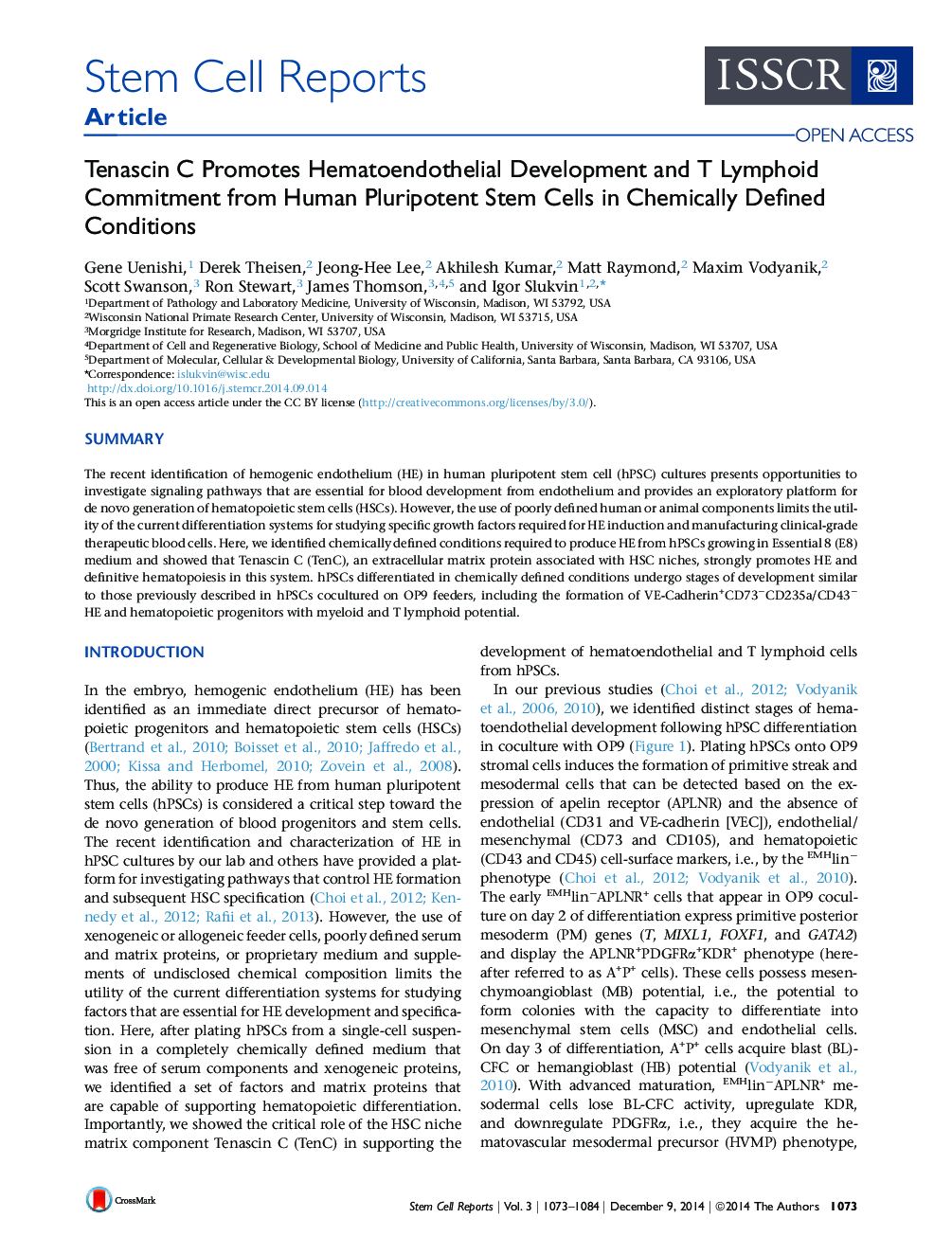| Article ID | Journal | Published Year | Pages | File Type |
|---|---|---|---|---|
| 2093685 | Stem Cell Reports | 2014 | 12 Pages |
•Hemogenic endothelium is generated in a completely defined xenogen-free system•The system reproduces all stages of hematopoietic development•Tenascin C enhances hematoendothelial development from pluripotent stem cells•Tenesacin C uniquely supports T cell specification
SummaryThe recent identification of hemogenic endothelium (HE) in human pluripotent stem cell (hPSC) cultures presents opportunities to investigate signaling pathways that are essential for blood development from endothelium and provides an exploratory platform for de novo generation of hematopoietic stem cells (HSCs). However, the use of poorly defined human or animal components limits the utility of the current differentiation systems for studying specific growth factors required for HE induction and manufacturing clinical-grade therapeutic blood cells. Here, we identified chemically defined conditions required to produce HE from hPSCs growing in Essential 8 (E8) medium and showed that Tenascin C (TenC), an extracellular matrix protein associated with HSC niches, strongly promotes HE and definitive hematopoiesis in this system. hPSCs differentiated in chemically defined conditions undergo stages of development similar to those previously described in hPSCs cocultured on OP9 feeders, including the formation of VE-Cadherin+CD73−CD235a/CD43− HE and hematopoietic progenitors with myeloid and T lymphoid potential.
Graphical AbstractFigure optionsDownload full-size imageDownload as PowerPoint slide
